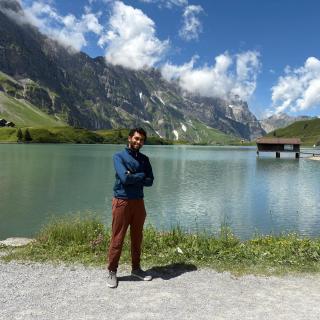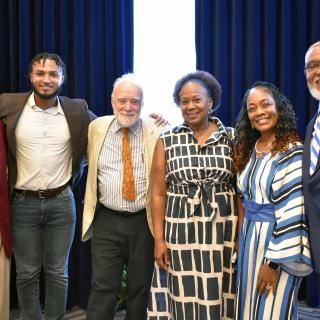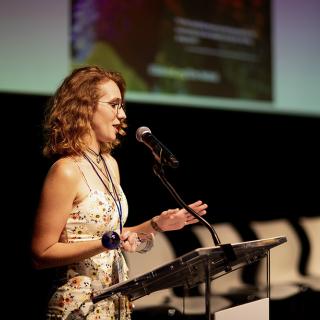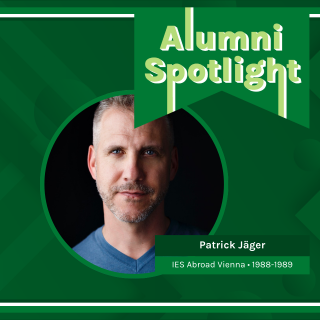 Meet February's Alum of the Month, Dr. Therese Martin (Madrid 1985-86)! With a Ph.D. in the History of Art and Architecture from University of Pittsburgh, she taught art history at the University of Arizona and has been working as a tenured scholar at the CSIC, Spain's premier research institution since 2009. In 2010, she received a €1.2 million grant from the European Research Council for a proposal titled Reassessing the Roles of Women as ‘Makers’ of Medieval Art and Architecture. Read on to find out what led her to become a researcher, what her project means to her and others, and even her favorite hidden gem in Madrid!
Meet February's Alum of the Month, Dr. Therese Martin (Madrid 1985-86)! With a Ph.D. in the History of Art and Architecture from University of Pittsburgh, she taught art history at the University of Arizona and has been working as a tenured scholar at the CSIC, Spain's premier research institution since 2009. In 2010, she received a €1.2 million grant from the European Research Council for a proposal titled Reassessing the Roles of Women as ‘Makers’ of Medieval Art and Architecture. Read on to find out what led her to become a researcher, what her project means to her and others, and even her favorite hidden gem in Madrid!
IES Abroad: What led you to study abroad in Madrid?
Therese Martin: It’s hard to pinpoint a time when I didn’t want to study abroad. I can remember at age 12 looking forward to starting high school because then I would finally have the opportunity to take Spanish class, and I could start getting ready for my junior year of college in Spain. What I couldn’t have realized is that the path of my life would forever change because of that year.
IES Abroad: How did studying abroad influence you, personally and professionally?
TM: At IES Abroad Madrid, I took my first ever Art History course, and it was nothing less than an epiphany for me. I had never imagined that history could be explained through the works of art and architecture produced by men and women down through the centuries. Not wars or battles, but paintings, sculptures, books, and buildings. I was hooked from the very first class, which met two days a week at the Universidad Complutense in Madrid and one day at the Museo del Prado. There I learned to look closely, to see the meaning in style, and to understand the language of imagery. Art still intrigues me as much as it did during that first course in Madrid, but now I am fortunate to be the one making discoveries, adding to the story, and teaching others.
IES Abroad: When did you return to Madrid, and what has changed since you first studied there?
TM: Since I first came to Madrid, the city’s international flair has greatly increased. It is now common to hear many languages and accents, which in the 1980s was the case only in a small part of town. Immigration has led to a boom in shops and restaurants from all areas of the world. In 1985, I missed American treats like Oreos and Ben and Jerry’s; now it is possible to buy anything I could want in Madrid, including canned pumpkin for pies at Thanksgiving.
Madrid is still a most livable city with a vibrant nightlife, easy to get around both on foot and by public transportation, safe, and not terribly expensive. There are too many cars that make too much noise, but I would still rather live here than anywhere else in the world.
IES Abroad: What is your favorite landmark in Madrid? Favorite hidden gem?
TM: I still love the view that first captivated my 19-year-old self, looking down Gran Vía toward the winged figure atop the Metropolis building, especially when the street is lit up at night. As for a hidden gem, the Instituto Valencia de Don Juan is a private house museum and research library that can be visited by appointment. Its eclectic collection of medieval Christian and Islamic objects is utterly fascinating, unknown even to many scholars.
IES Abroad: Tell us about your current project highlighting women in the history of art and architecture. What inspired you to apply for the grant? What should we know about women in art?
TM: My project is a response to the silence of medieval women in the history of art: despite the advances of recent decades, the field continues to be mostly a history of men. There is an unspoken underlying assumption that works of art and architecture in the Middle Ages were made by and for men, except for the rare cases where it can be demonstrated otherwise. That is, medieval art is not approached from a position of neutrality but rather presumed to be masculine in origin and intent. Scholars routinely christen anonymous artists with the title “Master of…” followed by some outstanding characteristic by which we recognize “his” work. By contrast, artists and patrons are identified as women only when their names are recorded on a work of art or in documentation. These noteworthy cases have been fruitfully studied, often within a framework of the exception that proves the rule. But my research has turned up so many of these so-called exceptions that it is clear that a new rule is in order. It is time we recognize that these perceived aberrations from the norm are really a new pattern waiting to be identified.
One point of departure for my cross-cultural, transregional study of the impact women had on medieval art and architecture is to refocus on the terminology used in the Middle Ages, particularly the verb “to make.” For artist and patron is a false dichotomy, or, at the least, a modern one. The verb employed most often in medieval inscriptions—from paintings to embroideries to buildings—is “made” (fecit). This word denotes at times the individual whose hands produced the work, but it can equally refer to the person whose funding made the undertaking possible. Whereas today we tend to separate patron from artist, the medieval view recognized both as makers.
One of the most challenging aspects of my project comes from its multicultural study of Christian, Islamic, and Jewish works. Just as these faiths were interrelated in the Middle Ages, to understand them today they must be examined as integral parts of an overall milieu. My project suggests a new way of thinking about the history of medieval art and architecture, one that does not automatically assume it to be made by men but recognizes the contributions of women while situating them firmly within their historical context, difficult as it may have been.
My team, including Amanda Dotseth, an American Ph.D. candidate who is also an IES Abroad Madrid alum, is made up of ten members from five countries who together address the question of medieval women’s participation in the production and consumption of art. Our research is creating a renewed way of looking at the entire history of art and architecture: while recognizing the very real limits to which medieval women were subject, we can demonstrate that their historical importance has been undervalued. Through an investigation of women’s roles as patrons and facilitators, producers and artists, owners and recipients, including both their collaborations and confrontations with men, we are developing a database that documents the thousands of women who were involved with art during the Middle Ages.
IES Abroad: What is the most interesting aspect of your work?
TM: Carrying out research on women’s contributions to Spanish Romanesque architecture of the 11th and 12th centuries captivates me utterly. Project management and administrative duties, alas, do not, but they go along with the big funding.
IES Abroad: What do you consider to be the top three skills or qualities necessary to be a good researcher?
TM: 1) Creativity: breakthroughs are made by those who are capable of formulating innovative questions or attacking old questions from unexpected angles.
2) Hard-working persistence: research on those innovative questions is often a long slog, and if you aren’t willing to put in a great deal of time and real effort, you won’t be a successful scholar.
3) Communication: you may have an exciting idea backed up by solid research, but if you can’t communicate your concept both orally and in writing, you won’t make an impact in the field.
IES Abroad: What advice would you give students who are considering studying abroad?
TM: Do it! Go for a full year, immerse yourselves in the culture, don’t hold back. Give yourselves a chance to stretch beyond what was known to you, even though the process won’t always be pleasant. The discoveries are worth the growing pains.




